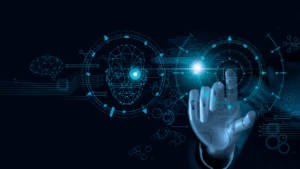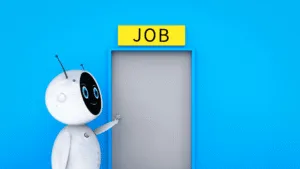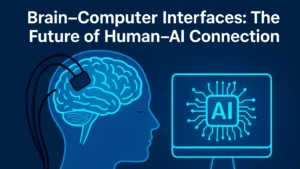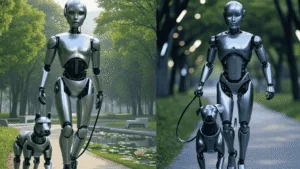How AI and Machine Learning Are Shaping the Future of Robotics

Robots are no longer simple machines programmed to perform repetitive tasks. Thanks to Artificial Intelligence (AI) and Machine Learning (ML), robots today are evolving into intelligent systems capable of learning, adapting, and making decisions in real time.
This next generation of robots is reshaping industries—from healthcare to agriculture—and even our homes. But how exactly are AI and machine learning revolutionizing robotics? Let’s dive in.
What’s the Role of AI in Robotics?
AI provides robots with the “brain” to think, reason, and act intelligently. While traditional robots rely on predefined instructions, AI-powered robots can:
Understand and process complex environments
Make decisions based on sensor data
Learn from past experiences and improve performance
Interact naturally with humans using language or gestures
This cognitive ability transforms a robot from a tool into a smart assistant or autonomous worker.
How Machine Learning Enhances Robot Intelligence
Machine Learning (ML) is a subset of AI where robots learn from data instead of being manually programmed. Here’s how it works in robotics:
Supervised learning: A robot learns from labeled datasets (e.g., images of objects to recognize them).
Reinforcement learning: Robots learn through trial-and-error (e.g., a robot learns to walk by balancing itself).
Unsupervised learning: Robots find patterns in data without human labels (used in clustering, anomaly detection).
These learning techniques enable robots to adapt to changing environments and optimize their performance over time.
Real-World Applications of AI-Powered Robots
1. Self-Driving Vehicles
Autonomous cars like those developed by Tesla and Waymo use AI for real-time decision-making, object recognition, and navigation. Robots with similar AI frameworks are also used in delivery and warehouse logistics.
2. Healthcare Robotics
Surgical robots use AI to assist with precision-based operations. AI helps them interpret patient data, plan procedures, and avoid mistakes.
3. Smart Assistants and Companions
AI-driven robots like Pepper or Jibo interact socially with humans—detecting emotions, responding to voice commands, and even learning preferences over time.
4. Industrial Automation
AI helps factory robots adapt to new products, detect defects, and work alongside humans (cobots) safely and efficiently.
5. Agricultural Robots
Robots with machine vision and learning models are used to identify crop diseases, harvest fruit, and optimize irrigation—leading to smarter, more sustainable farming.
The Feedback Loop: Learning and Improving
AI and ML allow robots to get smarter over time. As they collect data from the environment, they:
Analyze outcomes of their actions
Adjust their behavior for better performance
Share learnings with cloud-connected robotic systems (swarm intelligence)
This creates a self-improving ecosystem where robots evolve without human intervention.
Challenges and Ethical Considerations
While promising, AI-powered robots come with challenges:
Bias in data can lead to flawed decision-making
Privacy concerns when collecting human data
Job displacement in industries heavily reliant on automation
Trust and transparency in human-robot collaboration
As robots become smarter, responsible AI development becomes crucial.
The Future: Smarter, Safer, More Autonomous Robots
Looking ahead, we can expect:
AI-powered humanoid robots that assist in homes and elderly care
Collaborative learning between robots across networks
Edge AI—robots processing data locally for faster responses
Natural language interaction and emotional intelligence in robots
These advances will make robots more human-like, accessible, and valuable in everyday life.
Final Thoughts
AI and machine learning are not just features—they are the driving force behind the robotics revolution. The ability to learn, adapt, and interact with the world is what sets the next generation of robots apart.
As the lines blur between artificial and human intelligence, we’re entering an era where robots will be our co-workers, caretakers, and even companions. The future is intelligent—and robotic.



